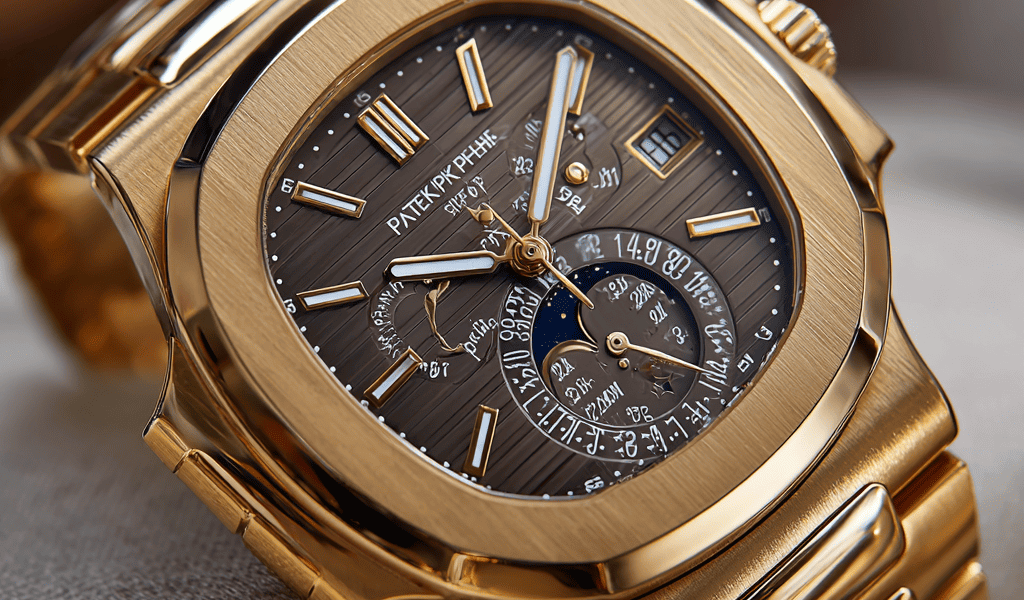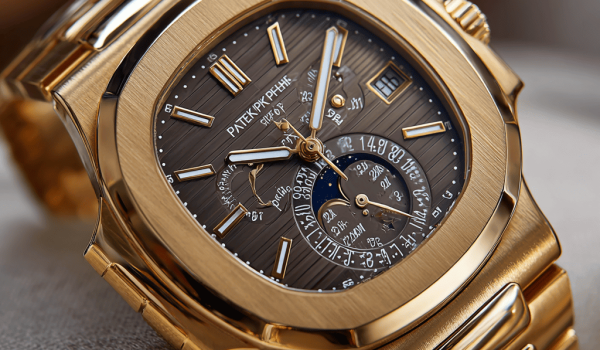In an age of mass production and digital immediacy, the creation of a luxury men’s watch stands as a powerful testament to human ingenuity, patience, and artistry. Each timepiece is more than a instrument for telling time; it is a microcosm of tradition and innovation, a wearable masterpiece that can contain hundreds of meticulously hand-finished parts working in perfect harmony. The journey from a raw sketch to a precision instrument on your wrist is a fascinating saga of skill passed down through generations. For those who appreciate this profound level of artistry, the act of acquisition is itself a celebration of craftsmanship, an experience beautifully realized for those who choose to buy AP watches in Dubai, a city that mirrors the dedication to excellence found in these horological marvels.
This article pulls back the curtain on the incredible processes and painstaking artistry that define the world of haute horology.
The Genesis: Design And Conception

It all begins with an idea. Master designers and watchmakers collaborate to create a concept that must balance aesthetic beauty with mechanical feasibility. This stage involves countless sketches, 3D computer models, and technical drawings. Every curve, angle, and proportion is deliberated to ensure the watch is not only stunning but also ergonomically comfortable and structurally sound. For a complicated timepiece, this phase can take years, as the team must envision how hundreds of tiny components will interact within the confined space of a case. This creative genesis is a positive explosion of innovation, setting the stage for the miracle of engineering to come.
Forging The Foundation: Case And Bracelet Manufacturing
The watch’s case is its armor and its identity. Blocks of raw metal—be it 316L stainless steel, 18k gold, platinum, or a high-tech alloy like ceramic or titanium—are transformed through a series of precise processes.
- Milling And Turning: CNC (Computer Numerical Control) machines mill the basic case shape from the solid metal block with incredible accuracy, often to tolerances finer than a human hair.
- Hand-Finishing: This is where the magic happens. After machining, the case is far from finished. Artisans employ an array of techniques to create its final look:
- Polishing: Using rotating wheels coated with diamond paste, polishers burnish surfaces to a mirror-like, reflective shine.
- Satining: With fine brushes or abrasive tapes, craftsmen create a soft, brushed, matte finish.
- Bevelling: Sharp edges are meticulously hand-ground and polished to create beautiful, light-catching bevels.
A single case can involve a combination of these finishes, requiring immense skill to ensure crisp transitions and flawless surfaces. The bracelet undergoes a similarly rigorous process, with each link finished individually before assembly.
The Beating Heart: Movement Manufacturing And Decoration
The movement, or calibre, is the soul of the watch. Its creation is the pinnacle of micro-engineering.
- Creating The Components: Base plates (the main chassis) and bridges (the supports that hold the gears) are stamped or milled from brass. They are then drilled with tiny holes to hold the jewels and pivots of the wheels. The wheels, pinions, and springs are produced from specialized metals and alloys, each requiring diamond-cut tools to achieve their perfect form.
- The Art Of Decoration: This is what separates a mere mechanism from a work of art. Even parts never seen by the owner are exquisitely finished. This serves both to remove microscopic imperfections that could affect performance and to elevate the movement to a piece of art.
- Perlage: A circular, wave-like pattern applied to the base plate.
- Côtes De Genève: Geneva stripes, a wave pattern applied to bridges.
- Anglage: The painstaking hand-bevelling and polishing of the edges of bridges to a convex shape.
- Blued Screws: Screws are heated to a specific temperature until they oxidize and achieve a deep, vibrant blue hue.
This decorative work is performed by artisans called finisseurs and decorateurs using traditional tools, often under microscopes. It is a positive and meditative process that adds soul and value to the timepiece.
The Face Of Time: Dial Making
The dial is the canvas of the watch, and its creation is an art form unto itself.
- Guilloché: Using a historic rose-engine lathe, a master guillocheur engraves intricate, precise patterns into a blank brass dial. The machine is controlled entirely by hand, requiring decades of experience to master.
- Enameling: Grand Feu enamel involves applying a glass powder to the dial and firing it in a kiln at extremely high temperatures multiple times. The result is a deep, glossy, and incredibly durable surface that will never fade.
- Index Application: Tiny hour markers, often made of solid gold, are hand-set onto the dial. This requires a steady hand and a keen eye for perfection.
- Printing: The finest text and minute scales are pad-printed onto the dial with astonishing precision.
Bringing It To Life: Assembly, Adjustment, And Testing
Once all components are ready, the watchmaker begins the “assembly” or remontage.
- Assembly: In a pristine, dust-free environment, the watchmaker meticulously assembles hundreds of tiny components using tweezers and screwdrivers. This is a process of immense concentration and dexterity.
- Escapement And Regulation: The heart of the mechanical movement is the escapement. The watchmaker must carefully install the balance wheel, hairspring, and pallet fork. This is the most critical step, as it governs the watch’s accuracy.
- Regulation: The assembled movement is put through a series of tests in different positions and temperatures. The watchmaker makes microscopic adjustments to the balance spring to ensure it keeps time within strict chronometer standards. This pursuit of precision is a positive and relentless drive for perfection.
The Final Vigil: Casing Up And Quality Control
The finished movement is carefully placed into its case, and the dial and hands are fitted. The watch then undergoes a final battery of tests for water resistance, power reserve, and overall function. Only after passing every single test does the timepiece earn the right to bear its brand’s name.
A Legacy On The Wrist
The creation of a luxury watch is a symphony of human skill, a positive collaboration between designers, engineers, metallurgists, and artists. It is a process where tradition is not just preserved but is constantly evolved through innovation. To own such a timepiece is to wear a story—a story of countless hours of dedicated work, of a passion for perfection, and of a beautiful, mechanical heartbeat that was made entirely by human hands. It is a permanent reminder that true luxury is not just about what you have, but about understanding and appreciating the profound artistry and human achievement that made it possible.









